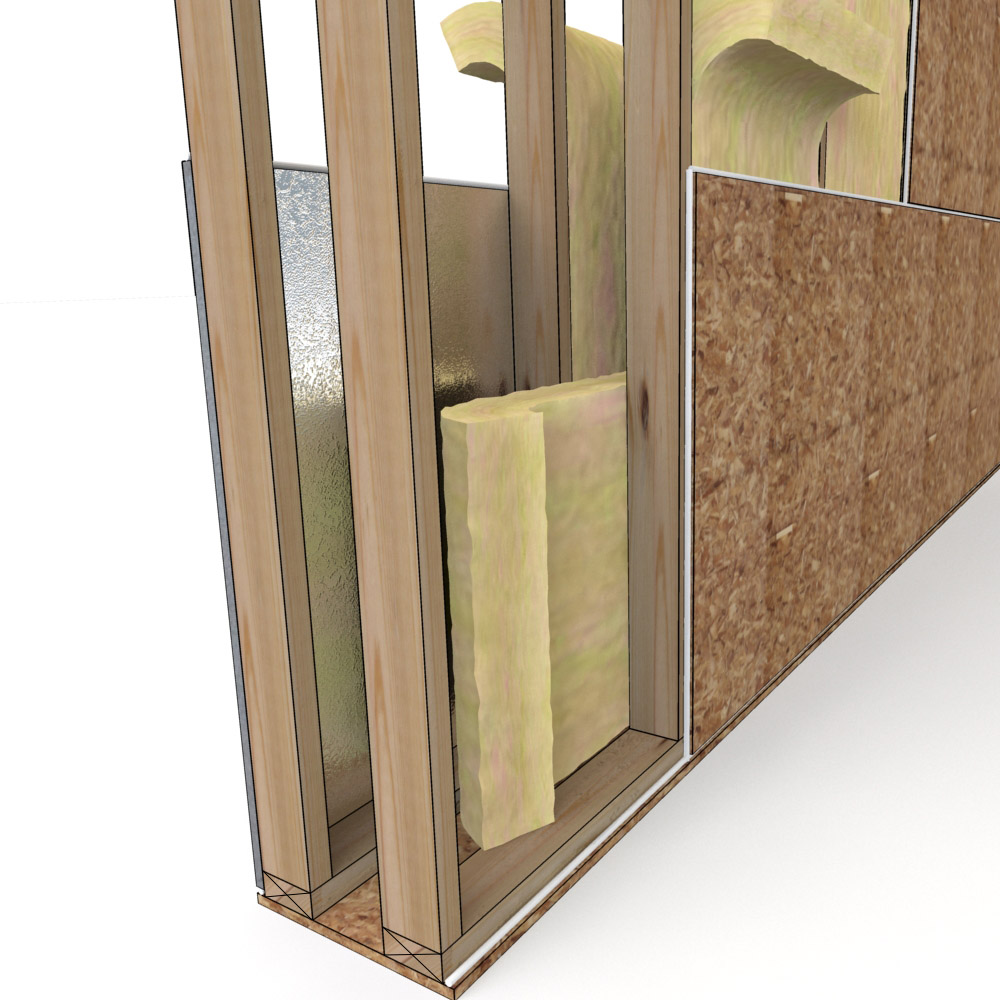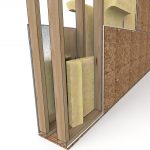John Krigger has practiced home performance and energy efficiency for more than 30 years. Over that time he’s collected a lot of research papers and articles.. We were doing some house cleaning recently and came across some of these older articles and papers in a filing cabinet. Many of them date back to the early ’80s. One is from 1968. What’s interesting to me is how relevant many of the articles are today. Now I’m contemplating the following question: How much has our industry really advanced over the past 30 or 40 years?
Super-insulation then and now
I’m what you would call a newbie in our industry. I’ve worked at Saturn Resource Management for about 12 years. I still learn something new every day and am constantly reminded of how much I still have to learn. The old cadre of experts like John Krigger, Joe Lstiburek, Rick Karg, John Tooley, Terry Brennan, and others have been beating the energy efficiency drum for decades. Those old experts must feel exasperated hearing us newbies debating the issues as if we’re breaking ground, trying to come with new fixes and best practices for the old problems. Which brings me to our house-cleaning project. Consider these quotes below. One quote is older and the other is recent.
Example 1:
“Super-insulated homes can be built in any architectural style. If carefully executed, most people would not notice the details used to achieve the added efficiency. The most obvious design detail is deep window sills resulting from the thicker walls.
Most new homes are constructed to building code minimum standards for R-value, measuring the resistance to heat flow with higher values indicating greater resistance to heat flow. The super-insulated homes are typically insulated to a wall R-value of about R-42 and an attic value of R-70. These super-insulated R-values are about twice the level the building code minimum requires for new homes. The difference between super-insulated homes and older homes is much greater.”
Example 2:
“A super-insulation system demands both quantity of insulation and quality of workmanship. Insulation is increased to a point beyond conventional practice and careful installation is essential. To be effective, the entire “envelope” of the house — the ceiling, walls, windows, and foundation — must receive thorough attention to minimize heat loss. The local climate and cost of fuel dictate the specific level of insulation for each component.
An attic normally provides enough room to install adequate insulation (R-40 to R-60). In some cases, special roof framing details at the eaves may be required to permit the full thickness of insulation to extend over the outside wall. Also, proper attic ventilation must be provided.
Walls that accommodate high levels of insulation (R-30 to R-50) depart from standard design. There are two basic options: a double-stud wall or a single-stud wall with exterior insulation. Both wall options cost nearly the same; in part, the builder’s experience dictates which is preferable.”
So which example is old and which is new? Example 1 is from an article “Super-insulated homes are super warm, super efficient and super comfortable” by Paul Huijing, published on April 23, 2013. Example 2 is from a “Super-insulation: A Housing Trend for the Eighties” published by the National Center for Appropriate Technology in 1980.Compare some of the details between those two examples. Both say that super-insulated homes exceed code, or go beyond conventional practice. The insulation R-values are comparable. The older NCAT article discusses double-stud wall construction and exterior insulation, both of which provide a thermal break in the wall. Houses built using the techniques in either of these articles could be lauded today as examples of energy efficient buildings. However shouldn’t the newer example be well beyond the methods described in 1980?
Have we been here before?
There are many examples like these. Mechanical systems, duct design, moisture control, and more all have solid research which warrants building with energy efficient materials and methods. It’s all been researched, talked about, and tested. What will it take to really affect change? Are the “best practices” we recognize today really better than yesterday’s? Do we simply need more research and testing? Are we waiting for newer and better materials and methods? The rubber meets the road with the house. The builders, remodelers, contractors, and their customers must recognize and adopt these proven practices. But therein lies the rub. For example, in writing projects for our customers Saturn routinely wants include practices that were touted as “new advancements” over 20 years ago. Yet we usually get pushback that these techniques are too radical for our customer’s audience to adopt.
Like any industry, ours changes with the times. The old guard retires, new people come in. We newbies get trained and certified. We go to conferences and learn about the “latest best practices”. Research moves along. I’m not suggesting that new research, materials, and tools are not a worthy goal. But how do we keep from spinning our wheels and repeating the efforts of those that came before us? I hope we aren’t reading articles in 2043 that tout R-40 walls, which exceed current practice, as exemplary for home construction.



The first time I met John Krigger, he was providing hands-on training in weatherizing mobile homes. e learned to stuff batts with a Plexiglas stuffer into cavities. Novel, appropriate and still practical, though not quite so effective as dense pack. Who needs a blowing machine when we got us?
Bruce Manclark summed it up once this way “Where else are ya gonna find folks doing their job this hard for people they don’t even know?”
The day John Tooley stood in the room and said “The answer is IN THIS ROOM” that guy built 18 fires in 38 states, all talking and comparing notes, seizing the mastic by the hand and the hole by the flow.
One of the Trainers at John Kriggers gig was Stan Slaughter, who is aka The Eco-Troubadour. His early song about Global Warming proved prescient:
It’s ’cause a CO2, my dear.
It’s ’cause of CO2.
Pa says to Ma on the coast of Arkansas
It’s ’cause a CO2.
The building codes must keep up with the building science. If the customer does not perceive the value, they will go to our competitor with R-19 walls and corian countertops for the same price. As a world wide community we have a moral mandate to conserve energy. People will only do what is required. The law (codes) must be upgraded to incorporate what is already common knowledge.